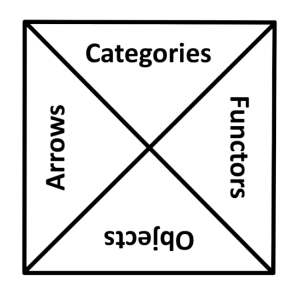 There is grandeur in this view of life, with its several powers, having been originally breathed into a few forms or into one; and that, whilst this planet has gone cycling on according to the fixed law of gravity, from so simple a beginning endless forms most beautiful and most wonderful have been, and are being, evolved.
There is grandeur in this view of life, with its several powers, having been originally breathed into a few forms or into one; and that, whilst this planet has gone cycling on according to the fixed law of gravity, from so simple a beginning endless forms most beautiful and most wonderful have been, and are being, evolved.
— Charles Darwin, from The Origin of Species
Another important part of Tyler Volk’s theory of combogenesis that I didn’t mention previously is the role that evolution plays in the dynamical realms of biology and culture. He even illustrates evolution as a three-part braid where the strands are the processes of propagation, variation, and (natural) selection. He argues that these processes are fundamental to an abstract notion of meta-evolution that can be seen working to cause change in both of these different domains.
I don’t think that there is anything controversial in listing these three processes as being essential for biological evolution. Other diagrams and schemas available on-line also mention overproduction or fecundity, or having more off-spring than is strictly needed to continue the population, and heredity or heritability, or the ability to pass on special traits from parents to children.
Overproduction not only allows for greater survival chances for the organism but also gives genetic variation a better chance at producing something beneficial or interesting. This depends on what your chance of variation is, of course, but it seems that it is just a facet of propagation. Likewise, heredity seems like it is also included in propagation, as the continuance of the same or similar attributes to one’s descendants.
I previously proposed that four processes were essential to the workings of evolution: generation, variation, selection, and speciation. Generation is basically another word for propagation, although propagation might more clearly suggest having same or similar dependents, whereas generation just means having descendants. Overproduction can also be combined into either of these aspects if so desired. But I’ll say that (at least in my mind) generation and propagation are roughly the same.
But what about the process of speciation? Is it as fundamental to biological evolution as we see it working on our planet today as the other three processes? Speciation only means the formation of new and distinct species by evolutionary process. So generation, variation, and selection don’t really allow for the “endless forms most beautiful” in the famous quote of Darwin, or do they? Speciation also implies the heritability attribute of evolution, so maybe both generation and speciation subsume the aspect of propagation in most biologists or at least Volk’s mind.
But an important question is, is specification implied by the other three, like three mathematical axioms implying a theorem, or is it independent of them? If you don’t have speciation, don’t you essentially just have one type of organism? Or would you just have a continuum of variation within the population, without any barriers for reproduction between them? I’ll admit that these questions are too complicated for me to answer at this time.
Getting back to Volk and combogenesis, he and others have argued that cultural change is an evolutionary process as well. Another important question then is, if speciation is fundamental to evolution, then is the differentiation of cultures fundamental to the evolutionary process of culture? If so, culture may never be ‘one thing’, and we will always have different cultures competing for dominance.
The competition of different cultures isn’t necessarily a bad thing, as perhaps they can also be pluralistically cooperative. And perhaps having multiple cultures are best in case the society heads down an evolutionary dead-end, longevity-wise. But still, this might be the reason that we will always have multiple cultures that just can’t agree, can’t get along, and can’t really live together.
You might hope that by language and reason, different societies and ideologies can bridge gaps in understanding. You might hope that good-will and morality might win out, and destructive vitriol will be held in check. You might indeed hope. But research has shown that people are very resistant to changing their minds once they think they are right. I think it has been shown that new types of media (I’m looking at you, internet) has exacerbated this problem to the n-th degree.
There is the fourfold Means and Ends (of course there is) that includes cooperation and competition, as well as conflict and coalition. It is based on looking at the compatibility and incompatibility of different means and ends. Even if you can’t have full cooperation, perhaps you can have (mere) competition or coalition within cultures, instead of out-and-out conflict. Perhaps the key is to find those common goals, and even those common values that might allow our factious society to move forward. But many others have said these types of things.
Interestingly, there are also four types of geographic biological speciation, so looking at these might give us clues as to what might be occurring for our speciation in cultural evolution (there’s a nice diagram at the Wikipedia entry). Do the same processes that produce species in the biological world also produce societal divergences in the cultural world? Are these processes the origins of tribes, nations, and even wars? Are there analogues of allopatric, peripatetic, parapatric, and sympatric speciation when considering different cultures and their conflict and cooperation?
Further Reading:
https://en.wikipedia.org/wiki/Speciation
https://sciencing.com/four-factors-natural-selection-8140305.html
https://metapatterns.wikidot.com/nyusjm1-1:flott-evolution
https://evolution.berkeley.edu/evolibrary/article/evo_43
https://www.ncbi.nlm.nih.gov/pmc/articles/PMC4816541/
https://www.nature.com/scitable/definition/speciation-183
https://www.newyorker.com/magazine/2017/02/27/why-facts-dont-change-our-minds





